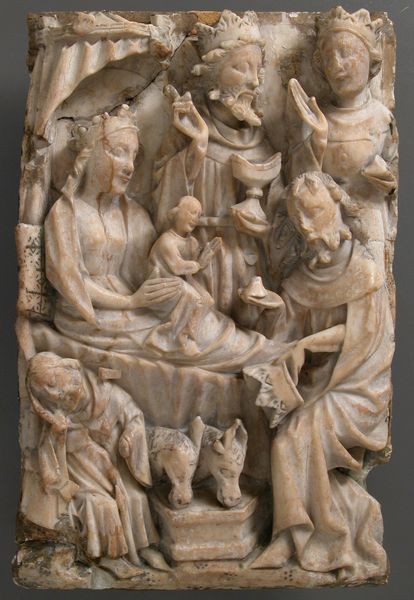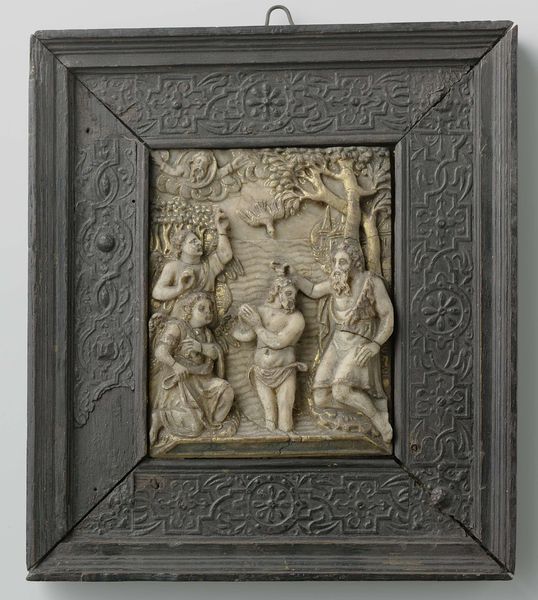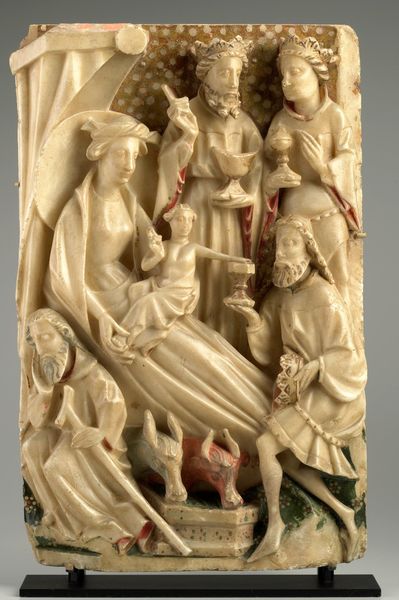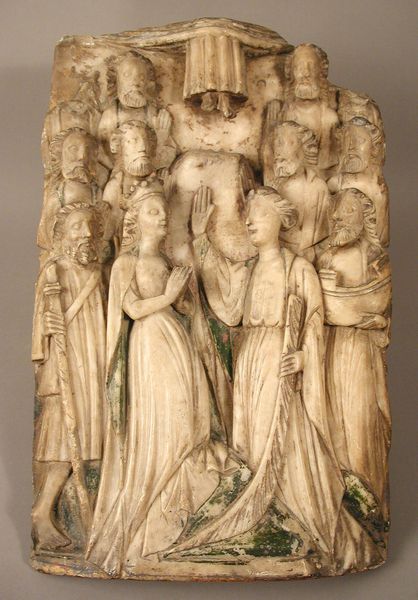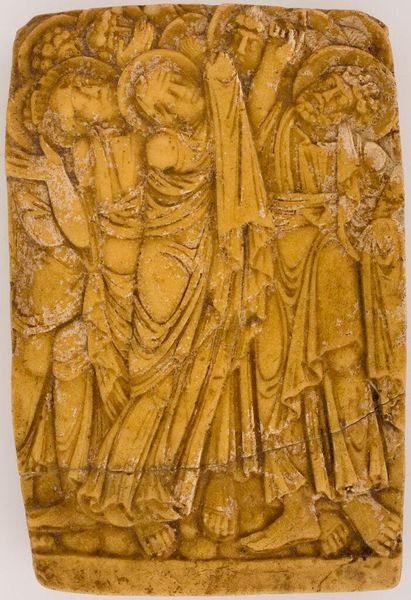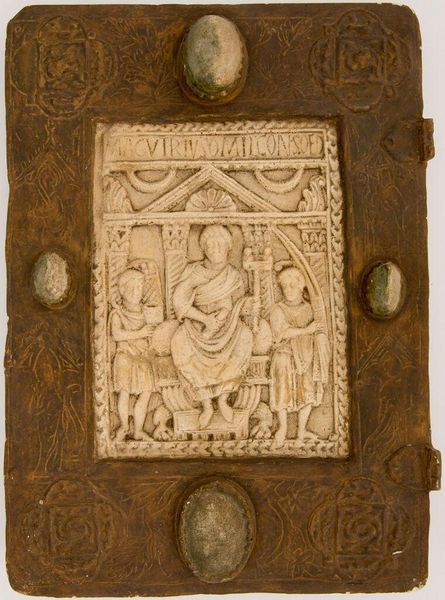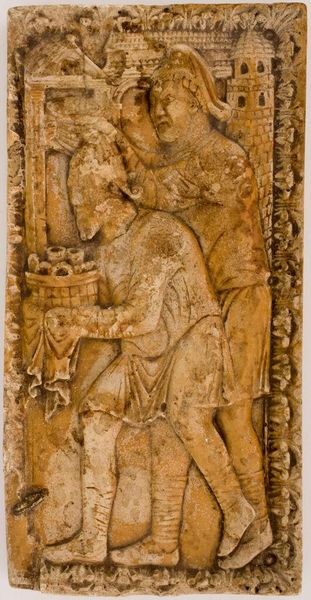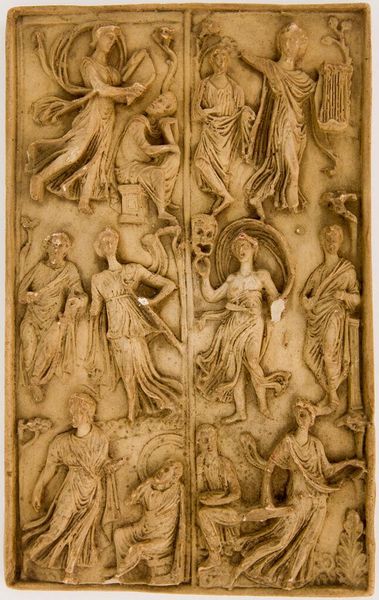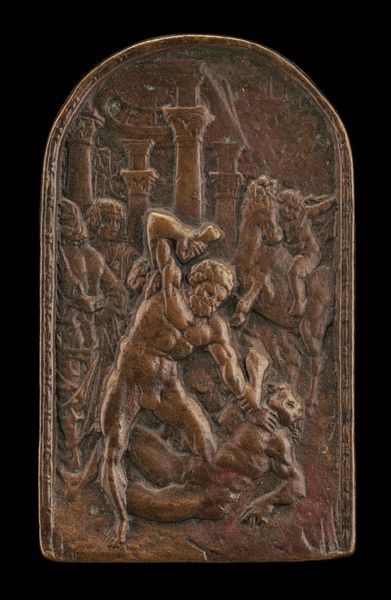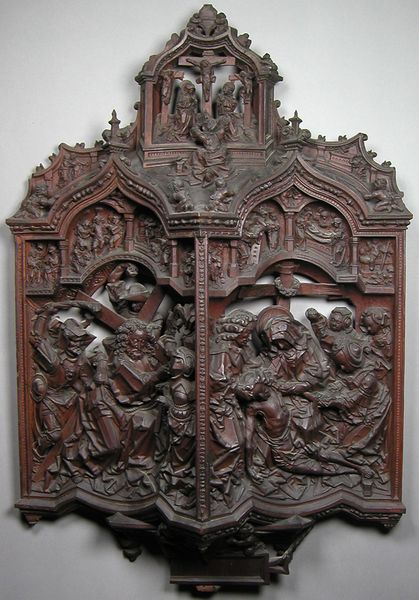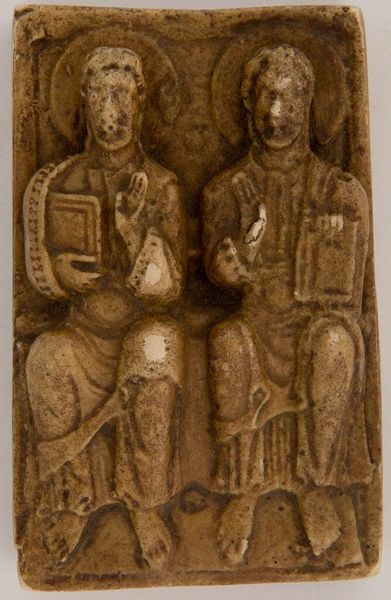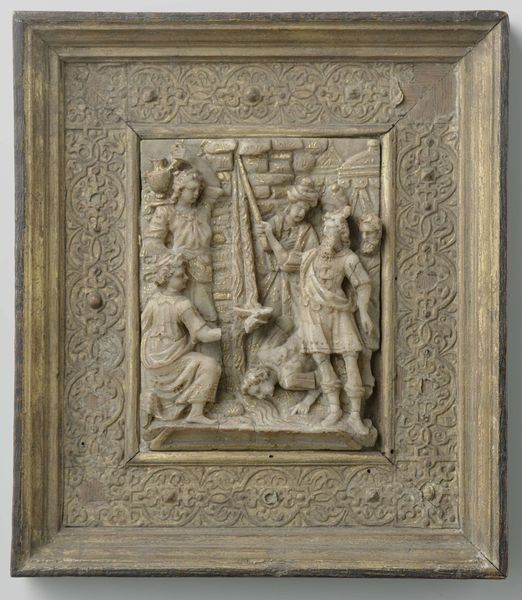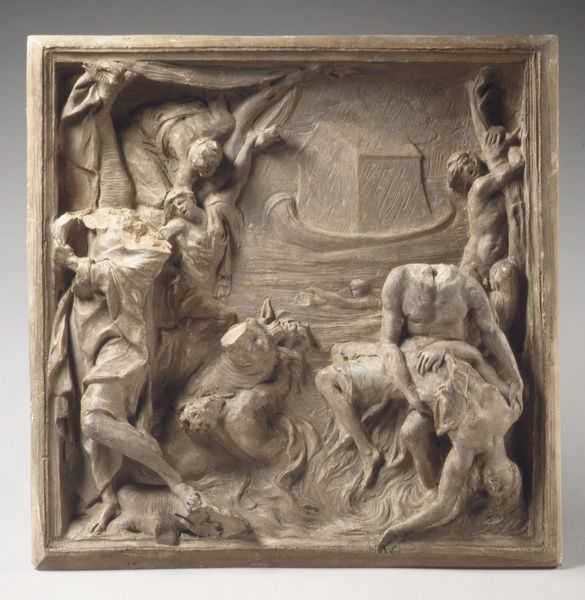
Fragments of a Box representing the Quest for the Golden Fleece 1400 - 1430
0:00
0:00
carving, relief, sculpture, ivory
#
medieval
#
carving
#
narrative-art
#
sculpture
#
relief
#
landscape
#
figuration
#
soldier
#
sculpture
#
horse
#
history-painting
#
medieval-art
#
ivory
Dimensions: Overall: 3 9/16 x 1 15/16 x 1/4 in. (9.1 x 5 x 0.7 cm) Framed: 4 1/2 x 2 15/16 x 11/16 in. (11.4 x 7.4 x 1.7 cm)
Copyright: Public Domain
Curator: Let’s discuss this intricate ivory carving, titled “Fragments of a Box representing the Quest for the Golden Fleece,” created by the Embriachi Workshop between 1400 and 1430. It resides here at the Metropolitan Museum of Art. The materials and the craftsmanship just sing! Editor: You know, before even thinking about process, the initial vibe I get is...claustrophobia. The tight frame, the crammed figures, the mountain looming. Curator: The close composition highlights the materiality of the ivory itself, doesn't it? The medium dictated the form, creating constraints, shaping production and labor practices of the time and challenging typical notions of landscape. Editor: Absolutely, and it makes me ponder the limitations this ivory worker faced. The narrative gets squashed and reshaped within such defined material limits, doesn't it? I mean, is that soldier really comfortable crammed up there with his horse? Curator: Precisely! The Embriachi Workshop used bone and antler, demonstrating efficient use of resources. The carving technique indicates specialization of labor in workshops, a direct connection between commerce and art, reflecting a Medieval market that determined not just subject, but shape! Editor: Right, I see that connection, yet still can’t help but imagine that artist struggling with each tiny slice, like they’re battling the very story to emerge. There’s a real intimacy of struggle here, the personal writ so very small, constrained to this medium. The tiny cuts speak volumes! Curator: Don't you think by examining such works, that through understanding materials, labor conditions, and distribution chains of artworks like this box, that we’re truly tracing trade, influence, and value during the period, going beyond mere aesthetic judgment? Editor: Mmm, indeed. But maybe, for a moment, appreciating the strange tenderness squeezed out in those miniature narratives allows us to engage that complex web of medieval creation—both its struggles and it constraints? Curator: Fascinating viewpoint. Ultimately this examination is about more than craft. Editor: And the narrative stretches out from material confines in new light.
Comments
No comments
Be the first to comment and join the conversation on the ultimate creative platform.
